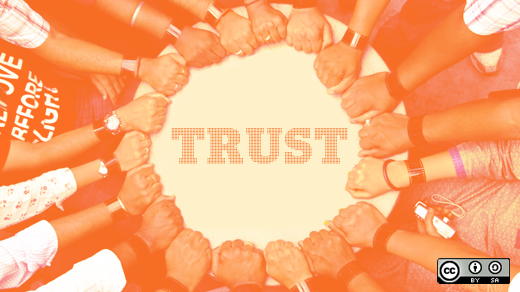"I'm glad I'm at the end of my career," a weary-sounding CIO confided in me on a recent trip to India. "I just don't think I can adapt as fast as today's market needs me to."
The fact that a long-time, successful leader would say this to me was—to be perfectly honest—a shock. But I empathized. We all realize that workforce dynamics are changing. Digital disruption is changing the nature of business, contemporary workers are demanding more from their organizations, and what it means to be a leader is shifting significantly as a result. But this candid admission from a CIO standing right in front of me (someone running all of IT in APAC for a global company) made all those trends much more concrete, much more real, and much more urgent.
There's no doubt about it: The nature of "effective" leadership is changing faster than any single person can comprehend. "Top-down," "directive-driven" leadership styles are actually losing their effectiveness in workplaces where hierarchies are no longer the norm, where succeeding now requires more than business acumen. And for marketers especially (particularly those of us in B2B marketing), upheaval is becoming commonplace.
This is a world that calls for leaders to become—in a word—open.
Open characteristics, open behaviors
"Open" is becoming a bit of a buzzword today, but, to me, it means something very specific in the context of leadership. I've always liked the way Charlene Li describes open leadership in her book on the subject. To Li, "open leadership" means "having the confidence and humility to give up the need to be in control while inspiring commitment from people to accomplish goals."
It's a powerful definition, one that has become even more powerful to me the longer I ponder its implications. To me, you are an open leader if you embody five key characteristics:
- Authentic
- Accessible
- Trusting
- Risk-taking
- Vulnerable
But these are just characteristics. They don't mean much until they manifest themselves in everyday habits and practices—until they influence the way other people around you behave. I believe these characteristics of open leaders typically translate into the following demonstrable behaviors:
A sense of purpose. Traditional leaders are task-focused. They typically maintain control by dividing people, by drawing clear boundaries around people's responsibilities and job descriptions, then ensuring everyone is doing precisely what he or she has been "assigned." Open leaders are purpose-focused. They lead not by doling out assignments, but by acting as translators of an organization's mission, inspiring their teams by helping them understand how the work they're doing fits into a broader picture of success. When their teams innovate and develop winning solutions they hadn't considered, they advocate for those solutions.
Approachability. While more traditional leaders tend to lead by cultivating fear (fear of disappointing one's boss, fear of ramifications from missing that one "key metric," fear of exposing oneself as inadequate in some way, etc.), open leaders encourage their teams to open up to them about their struggles, their difficulties, and their disagreements. They help people understand that inadequacy and fear of disappointment are common and normal. They work with their teams to create environments where people can be honest and forthcoming with their questions and concerns. It's a move from leadership by fear to leadership by patience—which is, as I've said before, one of the hardest lessons I've had to learn about being an open leader!
Humility. Traditional leaders believe they have to know everything, that they've actually become leaders because they have more knowledge and are smarter than anyone else around them. But that just isn't true—and it's a dangerous way to comprehend the reasons a person can (or should) become a leader! Open leaders are humble. They know enough to know exactly what they don't know, and they rely on their teams to help them see it. They tend to offer perspectives and ideas (not hard-and-fast answers), which they prefer emerge collaboratively, in dialog.
Empowerment. Open leaders put their teams before themselves. Where traditional leaders issue instructions, then listen for feedback about people's successes or failures carrying out those instructions, open leaders listen first. They treat their teams as subject matter experts, and they do their best to enable their teams based on what they're hearing from them. Their first question is not: "How can I get these people to do what I need them to do?" but rather "How can I help these people do what they're showing me is most important?"
Transparency. Open leaders are transparent. This means they are clear in their intentions and motivations, and disclose as much as they (legally and ethically) can about the conditions that lead to a particular decision. Closely related to transparency, then, is the notion of authenticity. Traditional leaders often allow themselves to make unreasonable demands of their teams—"unreasonable" precisely because they don't make the same demands of themselves. Open leaders practice what they ask of others. They don't dictate. They model. What their teams see in them is exactly who they are—and who they want their teams to emulate.
Advocacy. Open leaders are tireless advocates for their teams. While traditional leaders might intensely scrutinize every detail (at every minute!), open leaders give their teams the latitude to make the decisions and form the solutions they're best suited to produce. I've heard others describe this as a "long leash" approach to leadership, but that's not quite right. That "leash" is more like a lifeline or umbilical cord: a connection we maintain with members of our teams not so we can continually control them, but so we can guide them, nourish them, and fight for them.
Trust and respect. This is perhaps the most important pair of behaviors open leaders demonstrate. Where traditional leaders might try to ignore their teams' personhood by asking them not to take things personally, to check their emotions at the door, and to expect the same from one another, open leaders recognize that work is always personal—especially if they're already committed to connecting people's deeply individual passions with their organization's overall missions. Open leaders celebrate their teams' humanity. Put even more simply: Open leaders respect people enough to know that it's never "just business."
To win, be open
The war for top talent is real, and it's only intensifying. Succeeding in that war will require more than workplace "perks" like on-site gyms and lots of snacks. It will require a new brand of leadership, one tuned into the needs and desires of today's workforce. Today's workers are looking for leaders that are accessible—people who invest in them, include them in the effort to solve tough problems, and are willing to help them chart their career paths. You won't be able to please (and retain) everybody, but for as long as people have chosen to be part of your team, you want them not only doing their best work but also feeling nurtured, recognized, and appreciated.
And that means much more openness—not just for leaders, but for everyone.






3 Comments